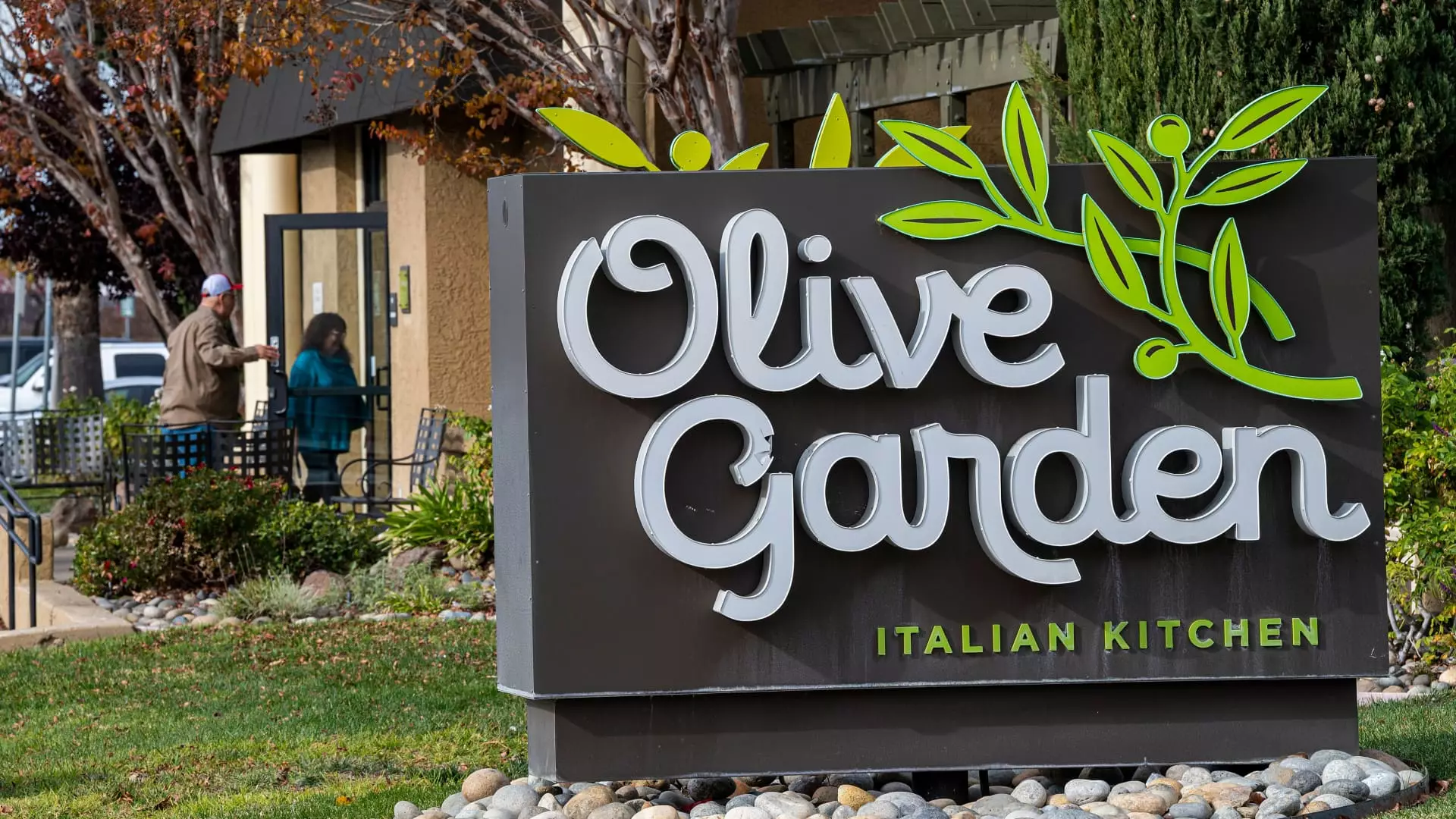Darden Restaurants has recently emerged as a beacon of financial strength amid a turbulent economic landscape, which is particularly remarkable given the prevailing narrative of consumer caution. On a day when many companies are faltering under the weight of inflation and changing consumer behaviors, Darden showcased impressive earnings that surpassed Wall Street’s estimates, reporting an adjusted earnings per share (EPS) of $2.98 against expectations of $2.97, and a revenue of $3.27 billion surpassing the predicted $3.26 billion. Such results not only reflect the company’s adept management but also signal a potential shift in consumer spending towards the casual dining sector.
Strategic Growth from Acquisitions and New Concepts
The strategic acquisition of 103 Chuy’s Tex Mex restaurants has proven to be a powerful driver behind Darden’s 10.6% revenue growth. This move illustrates a clear understanding of market dynamics—by expanding its footprint in a thriving segment of casual dining, Darden is capitalizing on the synergy between established brands and innovative newcomers. Moreover, the addition of 25 new restaurants demonstrates a proactive approach to growth, setting the foundation for sustained revenue increases. Additionally, same-store sales growth of 4.6% highlights not just recovery but expansion in an environment where many businesses struggle to maintain their footing.
Darden’s CEO, Rick Cardenas, affirmed this positive consumer sentiment during the analysts’ call, emphasizing that people are still willing to spend their discretionary income on dining out. This dynamic is crucial; while many sectors experience a downturn, the continued investment in casual dining signifies a resilient consumer appetite—a trend that many might underestimate.
Power Brands on the Rise
Olive Garden and LongHorn Steakhouse, both standouts within the Darden portfolio, delivered strong results that once again put them at the forefront of consumer preferences. With Olive Garden alone contributing approximately 40% of the quarterly revenue and reporting a same-store sales increase of 6.9%—significantly above the analyst expectations of 4.6%—it’s clear that these brands resonate deeply with diners. The reintroduction of popular promotions like Olive Garden’s “Buy One Take One” offers a compelling case for consumer loyalty, demonstrating how effective marketing can translate into tangible revenue.
Meanwhile, LongHorn’s impressive same-store sales growth of 6.7%, against a predicted 5.3%, further cements Darden’s position as a leader in the casual dining sector. Such growth underscores the dual threat of competition from fast casual dining establishments and more affordable fast-food options, yet Darden appears to be embraced by a customer base that values the quality and experience of its offerings.
Challenges Within the Fine Dining Segment
Despite these triumphs, Darden is not without its challenges, particularly within its fine dining segment which includes brands like Ruth’s Chris Steak House. The reported decline in same-store sales of 3.3%, contrasted with a minimal expected drop, points to broader issues affecting the luxury dining sector. While the upper-income demographic ($150,000+) is showing improved traffic, the overall fine dining experience seems underwhelmed by economic pressures that discourage extravagance. Darden’s need to address this imbalance should not be understated; a focused strategy that reinvents the fine dining experience could redeem this valuable segment.
The Road Ahead: A Forward-Thinking Strategy
Looking forward, Darden forecasts a 7% to 8% revenue growth for the fiscal year 2026, powered partly by an additional week in the year. This projection highlights not only confidence in its operational strategies but also optimism about economic recovery within the dining sector. The decision to authorize a $1 billion share repurchase program indicates that the company remains committed to returning value to its shareholders, reflecting a strong belief in its long-term growth potential.
However, the future of the Bahama Breeze brand remains uncertain, with indications that it may not fit into Darden’s strategic priorities moving forward. The potential restructuring or sale of this brand could provide necessary resources to further bolster the more profitable segments.
Darden’s robust performance amidst uncertainties and strategic foresight presents an optimistic outlook that deserves recognition. The company’s ability to pivot and adapt to changing consumer preferences offers a model for resilience in the post-pandemic landscape. In a world where caution often reigns, Darden’s ventures into cautious but calculated expansion reveal a pathway not just for survival, but for renewed growth.

